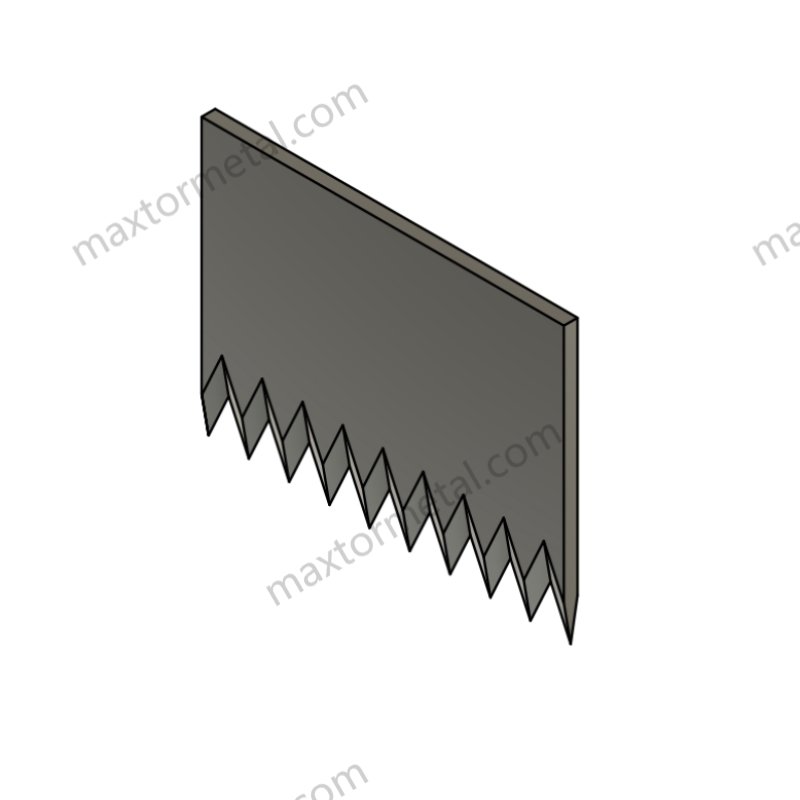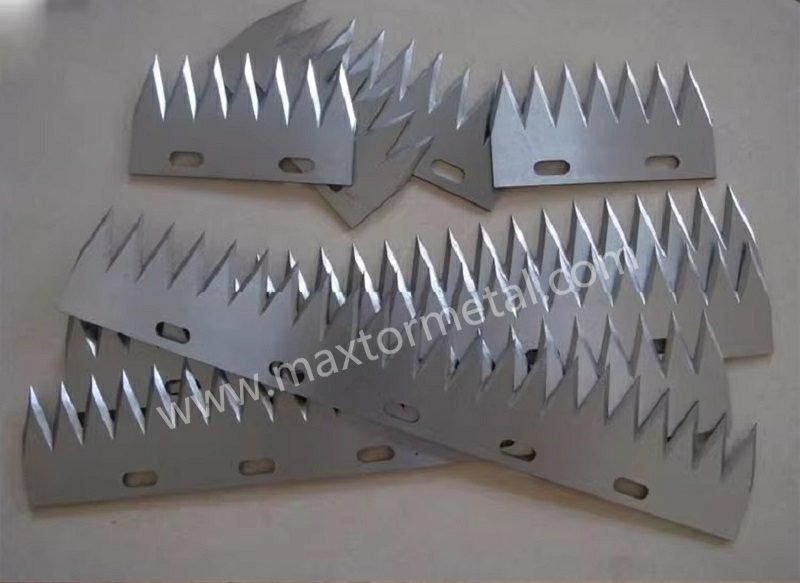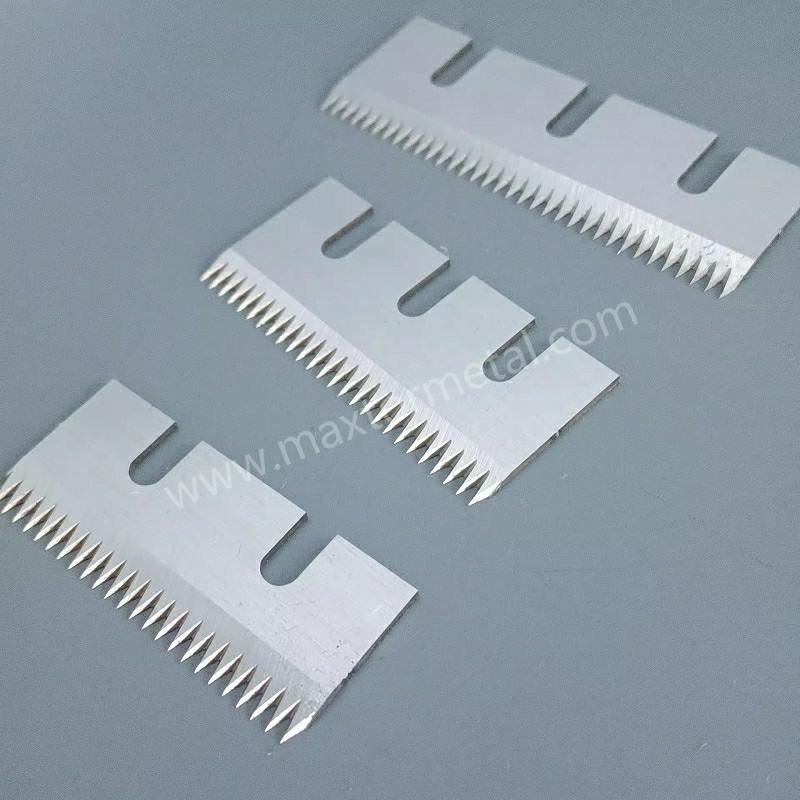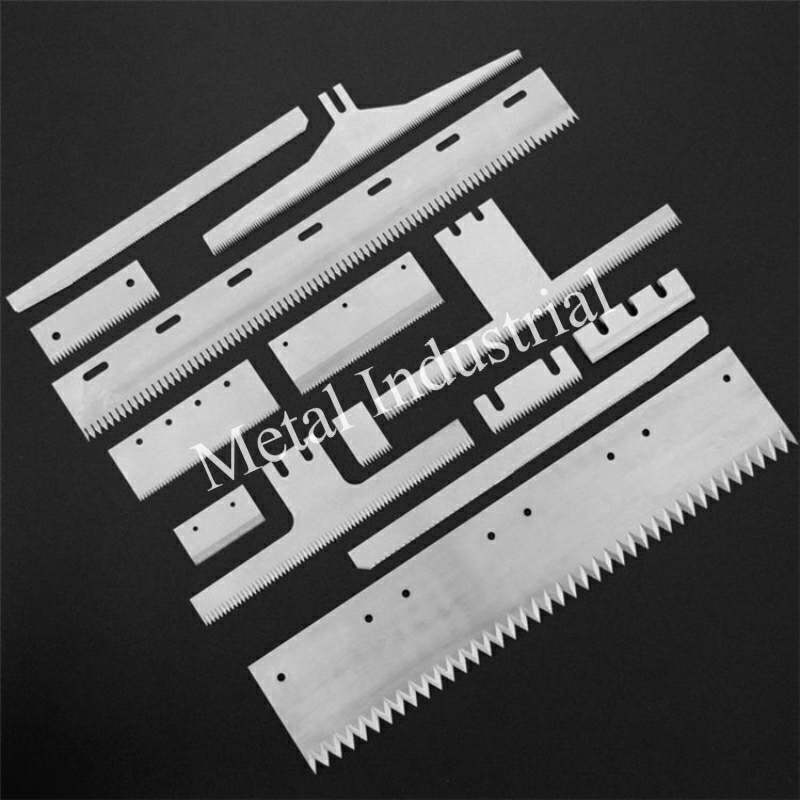
Lưỡi Dao Bao Bì are essential for effectively cutting and sealing materials. The flexographic blades market, which includes these packaging blades, is valued at $1.2 billion in 2023 and is projected to grow to $2.1 billion by 2032. Proper maintenance of blades, such as regular cleaning and inspections, enhances their performance, extends their lifespan, and reduces costs. Companies like Nanjing Metal specialize in providing custom blades tailored for specific packaging requirements. Maintaining blades in optimal condition is crucial for ensuring safety and high performance. Always feel free to Liên Hệ trusted suppliers for assistance when needed.
Những điểm chính
- Check packaging blades often to spot damage early. This avoids expensive fixes and keeps blades working properly.
- Wipe blades clean after using them to get rid of dirt and water. This keeps them sharp and stops rust from forming.
- Apply the correct oils to your blades to lower friction and make them last longer. Good oiling helps blades cut smoothly and easily.
Understanding Packaging Blades
What Are Packaging Blades and Their Other Names?
Packaging blades are tools made for cutting in packaging. They are also called industrial knives, slitter blades, or converting blades. These blades cut, trim, or perforate materials like plastic, paper, and cardboard. Their sharp edges and strong build make them very useful. They are needed for clean and accurate cuts in many industries. Knowing their purpose helps you see how they keep packaging efficient and high-quality.
How Do Packaging Blades Work?
Packaging blades cut materials by using controlled force. Their sharp edges make cutting smooth and easy. Some blades have jagged edges for tough materials, while others are straight for clean cuts. The blade’s sharpness, position, and material type affect how well it works. Taking care of blades keeps them working well, saving time and reducing waste.
Where Are Packaging Blades Used?
Packaging blades are used in many industries. In food, they cut films for snacks, frozen items, and drinks. In factories, they cut foam, rubber, and cloth. Even hospitals use them for cutting sterile packs. These blades are important for any job needing precision and speed. Picking the right blade helps improve your work process.
Regular Inspections and Wear Identification
Regular checks are key to keeping blades in good shape. Spotting wear early stops big repairs and keeps blades working well. This section shows how to find wear, do checks, and why early fixes matter.
Recognizing Wear Patterns
Common Signs of Wear
Blades wear out with constant use over time. You can notice wear by how the blade cuts. A dull blade may leave rough or uneven edges. More friction while cutting is another clue. Strange sounds or shaking can also mean wear. Watching for these signs helps fix problems early.
Visual Inspection Techniques
Looking at blades closely helps check their condition. Use bright light to see the blade’s edge clearly. Look for cracks, chips, or rust spots. A magnifying glass helps spot small damage. Slowly turn the blade to find bends or uneven parts. Regular checks like this keep blades in good shape.
Conducting Routine Checks
Frequency of Inspections
How often you check blades depends on their use. For heavy use, check daily or weekly. For lighter use, monthly checks might work. A set schedule helps find problems early and keeps work running smoothly.
Tools for Effective Inspections
The right tools make checking blades easier. A magnifying glass shows small flaws. A ruler checks if the blade is straight. A clean cloth can find rust by wiping the blade. These tools make inspections simple and accurate.
Importance of Early Detection
Benefits of Timely Repairs
Fixing blade issues quickly has many benefits. It makes cutting easier and reduces wasted materials. Early fixes also prevent delays and keep work on track. Fixing problems early helps blades last longer and work better.
Cost Savings from Preventive Maintenance
Taking care of blades saves money over time. Fixing small damage costs less than replacing a blade. Regular checks stop expensive replacements by catching wear early. Well-kept blades also use less energy, cutting costs and improving efficiency.
Cleaning and Rust Prevention

How to Keep Your Knives Clean and Dry
Keeping knives clean and dry is very important. During use, packaging blades collect dirt like paper dust, glue, or plastic bits. These can stick to the blade and make cutting harder. To stop this, clean blades after every use. Use a soft cloth to wipe off loose dirt. For sticky messes, use mild soap and a soft sponge. Always dry blades well to avoid moisture, which causes rust.
Water can harm your lưỡi dao. Store them in a dry place and keep them away from damp air. If you work in a wet area, use a dehumidifier to protect your tools. These steps help keep knives clean and sharp for longer.
Best Practices for Cleaning Packaging Blades
Vệ sinh Lưỡi Dao Bao Bì needs careful steps to keep them working well. If possible, remove the blade from the machine to clean it fully. Use a soft brush or air spray to remove dirt. For sticky spots, use warm water with mild soap or a special blade cleaner. Don’t use strong chemicals that might harm the blade.
Always clean in the direction of the blade’s edge to avoid dulling it. Rinse with clean water and dry with a lint-free cloth right away. Cleaning often makes cutting easier and helps blades last longer. Follow these tips:
- Clean blades after each work shift.
- Check for damage while cleaning.
- Wear gloves to stay safe during cleaning.
These habits keep Lưỡi Dao Bao Bì strong and reliable.
Tools and Solutions for Rust Prevention
Rust can ruin your lưỡi dao quickly. To stop rust, use rust-preventive oil or spray on the blade. These products block moisture from reaching the surface. For storing blades, use covers or wrap them in rust-proof paper.
Use silica gel packs or dehumidifiers to keep storage areas dry. If rust appears, clean it off with a rust eraser or fine steel wool. After removing rust, apply oil again to protect the blade. Regular care with these tools keeps lưỡi dao rust-free and ready to use.
Mẹo: Clean blades often to remove dirt and glue. This lowers friction and helps blades last longer.
Kỹ thuật bôi trơn
Why Lubrication Matters for Blade Maintenance
Lubrication is key to keeping Lưỡi Dao Bao Bì working well. It lowers friction, making cutting smoother and easier. Without it, blades can get too hot, wear out quickly, or break. Lubrication also stops rust and corrosion, which weakens blades over time. Oiling your blades often helps them last longer and work better.
Mẹo: Check if the blade feels dry or rough. This means it needs oil.
Picking the Best Lubricants for Packaging Blades
Not every lubricant works for Lưỡi Dao Bao Bì. Choose one that fits the blade’s material and job. For food packaging, use food-safe oils to meet safety rules. For heavy-duty tasks, pick strong industrial oils or sprays. Don’t use regular household oils, as they might harm the blade or fail to protect it.
How to Apply Lubricants Correctly
Using lubricants the right way makes them work best. First, clean the blade to remove dirt and dust. Then, add a small amount of oil evenly on the blade. Use a soft cloth to spread it across the surface. Don’t use too much oil, as it can collect dirt. Make sure to oil blades often, especially after cleaning or heavy use.
Ghi chú: Keep lubricants in a cool, dry spot to keep them fresh.
Sharpening and Edge Maintenance

Why Sharp Packaging Blades Matter
Better Cutting Performance
Sắc Lưỡi Dao Bao Bì make cutting faster and more accurate. Dull blades need more effort, slowing work and causing mistakes. Studies show sharp blades save time and reduce errors. This keeps packaging tasks smooth and reliable. In food and medical industries, sharp blades ensure clean cuts, improving product safety and quality.
Less Material Waste
Dull blades can ruin materials by making uneven cuts. For example, rough edges on plastic or paper can make them unusable. Keeping blades sharp reduces waste and saves money. Well-maintained slitter blades cut cleanly, boosting productivity. Regular sharpening helps you use materials efficiently while keeping high standards.
Knowing When to Sharpen
Poor Cutting Results
If your blade struggles to cut or leaves rough edges, it’s dull. This makes tasks harder and lowers work quality. Watching for these signs helps you sharpen before problems grow worse.
More Friction While Cutting
A dull blade creates resistance and doesn’t glide smoothly. This can cause overheating, harming the blade or material. Strange sounds or vibrations also mean it’s time to sharpen.
Ways to Sharpen Packaging Blades
Sharpening by Hand
Hand sharpening is a dependable way to keep blades sharp. Use a sharpening stone and hold the blade at a 20-30 degree angle. Move it steadily across the stone on both sides until sharp. This method takes time but gives you full control.
Using Electric Sharpeners
Electric sharpeners are quick and easy to use. They automatically set the right angle, great for beginners. Insert the blade, and the machine sharpens it for you. Check if your blade type works with the sharpener before using it.
Dụng cụ mài
Picking the Right Stone
The right sharpening stone is key for good results. Coarse stones fix damaged edges, while fine ones polish the blade. Combination stones offer both options and are versatile. Make sure the stone suits your blade material to avoid damage.
Other Sharpening Tools
Besides stones, other tools can help. Honing rods are good for quick fixes, and bench grinders handle tough jobs. Diamond-coated sharpeners work well on hard blades. Choose tools that fit your blade’s needs for the best outcome.

Keeping the Edge Sharp
Check Blade Sharpness Often
After sharpening, inspect the blade regularly for dullness or damage. Look for uneven edges or small nicks. Quick checks before use save time and keep blades working well.
Clean After Sharpening
Clean blades after sharpening to remove metal bits. Wipe with a soft cloth and add a light oil coat to prevent rust. Avoid harsh cleaners that might harm the blade. Cleaning keeps blades safe and ready to use.
Mẹo: Store blades in a dry, safe place to protect their sharpness.
Proper Usage and Handling
Safe Handling of Packaging Blades
Wear Protective Gear
Safety starts with wearing protective gear. Gloves protect hands from cuts and slips. Goggles keep your eyes safe from flying debris. Steel-toed boots stop injuries if something heavy falls. These steps make the workplace safer.
Bạn có biết không? In 2016, India had 48,000 workplace deaths. Many involved sharp tools, showing why safety matters.
Use Appropriate Grip Techniques
Hold lưỡi dao correctly to stay safe. Grip the handle firmly and keep fingers away from the edge. Use both hands for tough materials. Don’t push too hard, as it can cause slips. Good grip techniques improve control and reduce accidents.
Những Sai Lầm Thường Gặp Cần Tránh
Improper Blade Placement
Wrong blade placement can cause accidents. Always secure the lưỡi in its holder before use. Loose blades may wobble and cut unevenly. Check the blade’s position before starting work to stay safe.
Neglecting Safety Protocols
Skipping safety rules is dangerous. Turn off machines before fixing lưỡi dao to avoid injuries. Check blades for sharpness or damage to prevent failures. Following safety steps keeps everyone safe and work smooth.
Important Reminder: In 2019, U.S. factories had 15,380 cut injuries. Many could have been avoided by following safety rules.
Training for Employees
Conduct Regular Training Sessions
Training helps workers use lưỡi dao safely. Hold sessions often to teach proper handling and care. Show demonstrations to build confidence. Training lowers accidents and boosts efficiency.
Provide Clear Instruction Manuals
Instruction manuals are helpful for workers. Give easy-to-read guides on lưỡi use and care. Include steps, safety tips, and problem-solving advice. A trained team handles lưỡi dao responsibly.
Thực hành tốt nhất cho việc sử dụng Blade
Follow Manufacturer Guidelines
Follow the maker’s instructions for lưỡi care. These tips improve performance and safety. Some lưỡi dao need special cleaners or sharpening methods. Ignoring these rules can damage the lưỡi.
Monitor Blade Performance
Check how well the lưỡi works often. If it struggles or cuts poorly, sharpen or replace it. Watching performance saves materials and keeps results consistent.
Mẹo: In India, 47 factory workers get hurt daily from ignoring safety rules. Checking lưỡi performance and following tips can prevent injuries.

Storage Best Practices
Lưu trữ Lưỡi Dao Bao Bì properly keeps them sharp, rust-free, and safe. Follow these tips to make your blades last longer and stay in great shape.
Ideal Storage Conditions
Keep the Area Dry
Moisture is bad for lưỡi dao. It causes rust, making them weak and less effective. A dry space is important. Keep humidity below 50% to slow rust. For example:
| Mức độ ẩm (%) | Thời gian trước khi rỉ sét hình thành (Lưỡi dao thép không được bảo vệ) |
|---|---|
| 30% (Môi trường khô) | 2–4 tuần |
| 50% (Độ ẩm vừa phải) | 5–7 ngày |
| 70% (Độ ẩm cao) | 48 giờ |
| 90%+ (Độ ẩm cực đại) | 12 giờ |
Use silica gel packs or dehumidifiers to absorb moisture. These tools help protect your lưỡi dao from rust.
Control the Temperature
Big temperature changes can cause water to form on lưỡi dao. This leads to rust. Store lưỡi dao in a cool, steady place between 60°F and 75°F. Avoid heat sources, as they can bend or damage the lưỡi dao.
Mẹo: Use a thermometer and hygrometer to check storage conditions.
Organizing Packaging Blades
Use Blade Holders
Blade holders keep lưỡi dao safe and organized. They stop scratches and damage. Pick holders made of soft materials. Wall racks or drawer slots are great for storing many lưỡi dao neatly.
Label Storage Spaces
Labels make it easy to find the right lưỡi. Mark slots or holders with the blade type or size. This saves time and avoids mistakes. Organized storage improves efficiency by up to 30%.
Bạn có biết không? Good organization reduces blade handling time and errors.
Preventing Damage
Protect from Sunlight
Sunlight can heat lưỡi dao unevenly, causing warping or fading. UV rays also harm protective coatings, leading to rust. Store lưỡi dao in shaded or covered areas to avoid sunlight damage.
Keep Blades Dry
Water is harmful to lưỡi dao. Even small amounts can cause rust. Don’t store lưỡi dao near sinks or pipes. If the area is damp, use vapor corrosion inhibitors (VCI) to block moisture.
Mẹo chuyên nghiệp: Add a thin layer of rust-preventive oil before storing lưỡi dao for extra protection.
Regular Blade Checks
Look for Rust
Check stored lưỡi dao often for rust. Rust shows up as spots, rough areas, or discoloration. Clean rust with a rust eraser or fine steel wool. After cleaning, apply oil to protect the lưỡi.
Kiểm tra độ sắc nét
Even unused lưỡi dao can get dull if stored poorly. Test sharpness by cutting something simple. If the cut isn’t smooth, sharpen the lưỡi. Regular checks keep lưỡi dao ready to use.
Lời nhắc nhở: Inspect stored lưỡi dao every month to catch problems early and keep them in top condition.

The Benefits of Custom Blades
What Are Custom Blades?
Lưỡi Dao Tùy Chỉnh are special tools made for specific packaging tasks. Unlike regular blades, they are designed for certain materials, machines, or cutting methods. These blades help make packaging more accurate and efficient. A trusted company like Nanjing Metal creates custom blades to fit your needs perfectly. With 18 years of experience, Nanjing Metal is known for making top-quality industrial blades. Their expert team ensures every blade meets high standards and customer needs.
Advantages of Custom Blades for Packaging Needs
Custom blades bring many benefits to packaging work. First, they cut more accurately, reducing waste and giving clean results. Second, they save time by needing fewer replacements or adjustments. Third, they protect your machines by causing less wear. For example, companies using custom blades saw these improvements:
| Tiêu đề nghiên cứu điển hình | Ưu điểm chính |
|---|---|
| Giảm thiểu thông qua thiết kế lại | Tiết kiệm tiền và vật liệu cho dịch vụ vệ tinh. |
| Tăng hiệu quả | Boosted efficiency for a $1B global packaging provider. |
| Giảm thiểu thiệt hại | Lowered damage to blade servers during shipping for a global company. |
| Giảm chi phí vận chuyển | Giảm chi phí vận chuyển cho một nhà phân phối mỹ phẩm lớn. |
These examples show how custom blades can save time, cut costs, and improve results.
When to Invest in Custom Blades
Choose custom blades when regular ones don’t work well. If you handle special materials, need exact cuts, or replace blades often, custom blades are the answer. They are also great for industries needing strict safety or cleanliness, like food or medical packaging. Working with experts like Nanjing Metal ensures you get blades made just for your needs. Their skills help improve performance and save money over time.
Want to improve your packaging process? Liên hệ với nhóm Nanjing Metal today to learn more about custom blades.
Taking care of packaging blades keeps them working well and safe. Clean, sharpen, and store them properly to make them last longer. Working with a reliable blade maker like Nanjing Metal ensures top quality and custom options. Check out their skills now. 👉 Contact their team to improve your packaging work.
Câu hỏi thường gặp
How often should you clean packaging blades?
Clean your blades after each use. This stops dirt from building up. It also lowers friction and helps blades last longer. Always dry them well to keep rust away.
What tools are best for sharpening packaging blades?
Sharpening stones give precise results. Electric sharpeners work faster. Use honing rods for quick fixes. Pick tools that match your blade type.
Can blades be stored in humid places?
Do not store blades in damp areas. Moisture makes them rust and weakens them. Use silica gel packs or dehumidifiers to keep the storage space dry.
Xem thêm
Nâng cao hiệu quả và chất lượng: Lựa chọn quan trọng của lưỡi dao và máy đóng gói bền lâu
Giải pháp cắt hiệu quả cho vật liệu dính: Ngăn ngừa hư hỏng lưỡi dao và nâng cao hiệu suất



3 bình luận